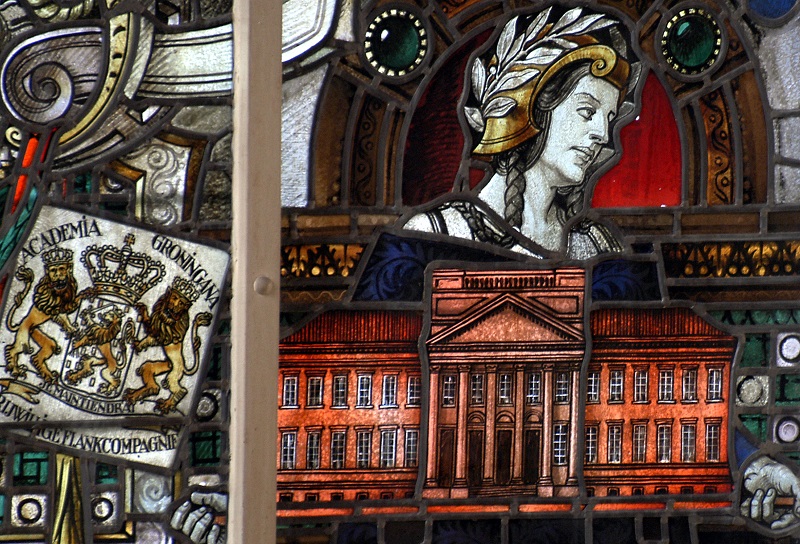It started out as a mandatory student project for the Master’s program ‘Writing, Editing and Mediating’. It turned into a 159-page tome on the University of Groningen’s history – the first English language history of its kind.
‘It had to be something that the world might really want’, says Dr. John Flood – assistant professor and expert in renaissance and medieval literature at RUG – of The University of Groningen – An Unofficial History. ‘Some years ago we thought: there isn’t actually an English language history of the university. So this project began there.’
Because there was over 400 years of history to cover, it took MA students two consecutive years to work on the book. Flood himself gathered the students’ contributions, took pictures, and designed and edited the book.
Campus history
Creating the first English language history of the university was important mostly for the sake of students. ‘When you come to the university, you want to know that there is 400 years of something there’, says Flood.
The university campuses each have their own histories, but often students are not aware of them because their studies are limited to one specific campus.
‘There are people taking classes at the Zernike campus who’ve never been to the Harmonie building and vice versa and they don’t realize that even at the level of architecture, the buildings at Zernike are absolutely fascinating and built in a completely different way than the buildings in the city centre’, says Flood.
Stained glass
But the book is not only about the differences between the campuses; the individual history of each campus is also covered.
The stained glass windows in the aula of the Academy building, for example, have their own interesting history. Crafted by artist Johan Dijkstra between 1937 and 1951, the central window being a gift from Queen Wilhelmina in 1938, there is more to these impressive pieces of art than the eye can see at first glance.
‘I think it means more to you, sitting in the aula, when you know there are these stories behind it, that the windows have been thought out, as well as it being absolutely beautiful glass’, says Flood.
Bommen Berend
While supervising and editing the book, Flood discovered ‘a lot of quite strange things’ in the history of our university, from a 400 year old pamphlet on students’ obligations, to the description of the Bommen Berend events. The archbishop of Münster is ‘Groningen’s bogeyman’, says Flood, ‘so the fact that he’s treated as an unlucky reformer in university sources is provocative. No Groninger will agree with it.’ A lot of what the students dug up we can be proud of, says Flood, ‘and then there are things that we shouldn’t be proud of and I think people should know about those.’
So what about the book’s subtitle, An Unofficial History? ‘It hasn’t been sanctioned by anyone in the university’, explains Flood. ‘That’s why it’s unofficial.’



